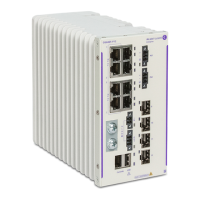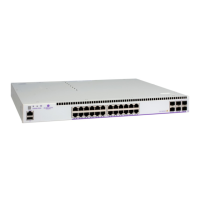Internet Enhanced Services
7210-SAS M Services Guide Page 503
connectivity check adds flexibility so that unavailable destinations will be removed from the
service provider’s routing tables dynamically and minimize wasted bandwidth.
The availability of the far-end static route is monitored through periodic polling. The polling
period is configured. If the poll fails a specified number of sequential polls, the static route is
marked as inactive.
An ICMP ping mechanism is used to test the connectivity. If the connectivity check fails and the
static route is de-activated, the router will continue to send polls and re-activate any routes that are
restored.
QoS Policies
When applied to 7750 SR IES services, service ingress QoS policies only create the unicast meters
defined in the policy. The multipoint queues are not created on the service. With IES services,
service egress QoS policies function as with other services where the class-based queues are
created as defined in the policy.
In access-uplink mode, IES IP interface associated with an access SAP supports use of service
ingress QoS policies. IES IP interface associated with an access-uplink SAP does not support use
of service ingress QoS policies. IES IP interfaces associated with an access-uplink SAP share the
port based ingress and egress QoS policies.
Note that both MAC and IPv4 criteria can be used in the QoS policies for traffic classification in
an IES.
CPU QoS for IES interfaces in access-uplink mode
In access-uplink mode, IES IP interface bound to routed VPLS services, IES IP interface on access
SAPs and IES IP interface on Access-Uplink SAPs are designed for use with inband management
of the node. Consequently, they share a common set of queues for CPU bound management traffic.
All CPU bound traffic is policed to pre-defined rates before being queued into CPU queues for
application processing. The system uses meters per application or a set of applications. It does not
allocate meters per IP interface. The possibility of CPU overloading has been reduced by use of
these mechanisms. Users must use appropriate security policies either on the node or in the
network to ensure that this does not happen.

